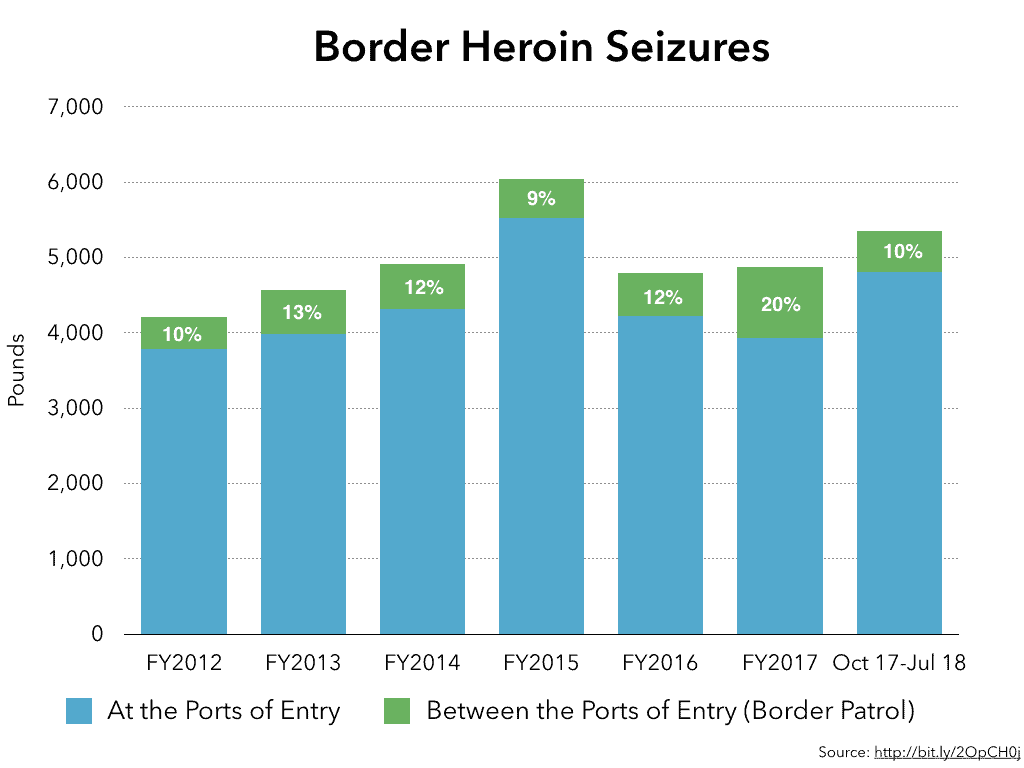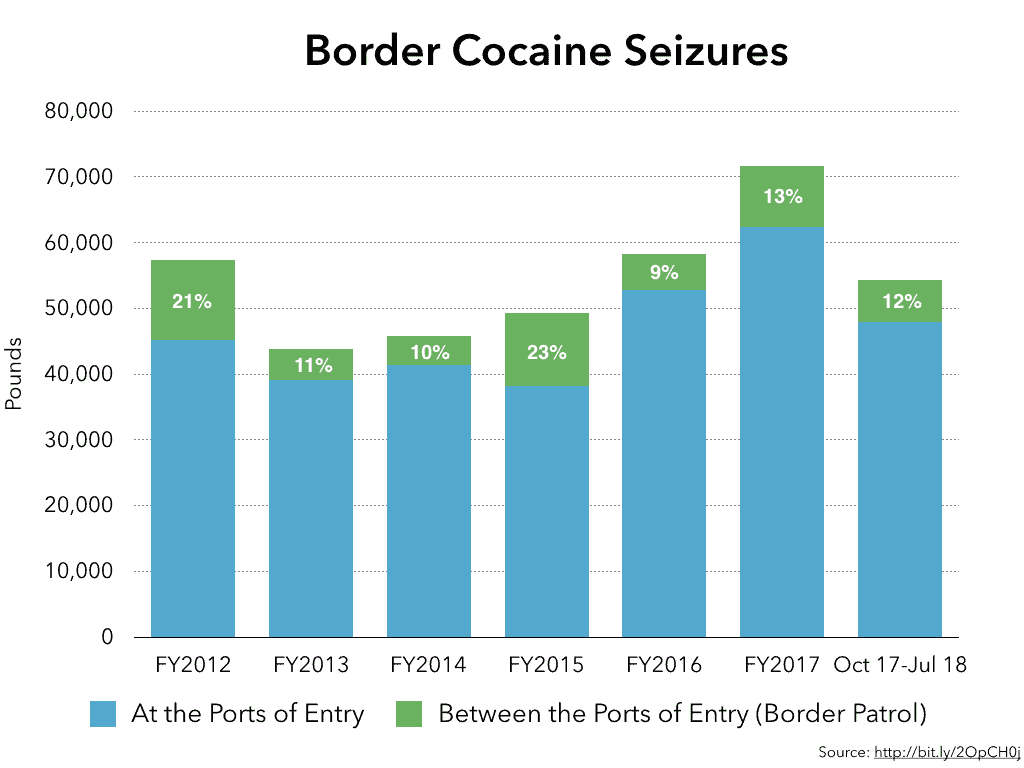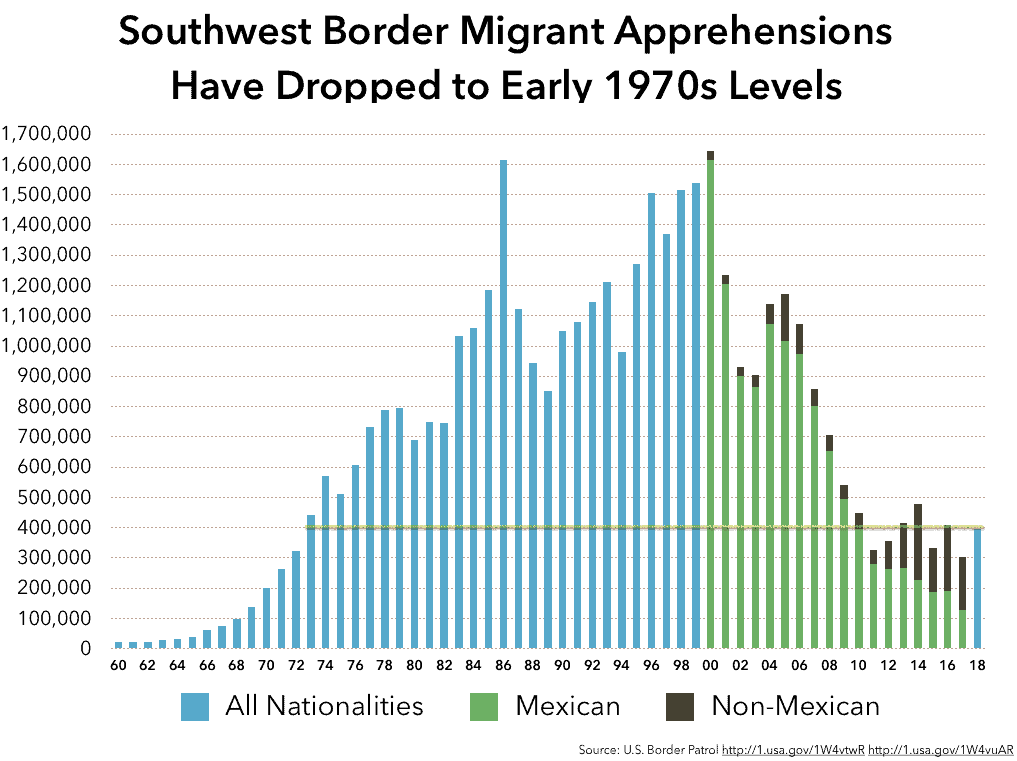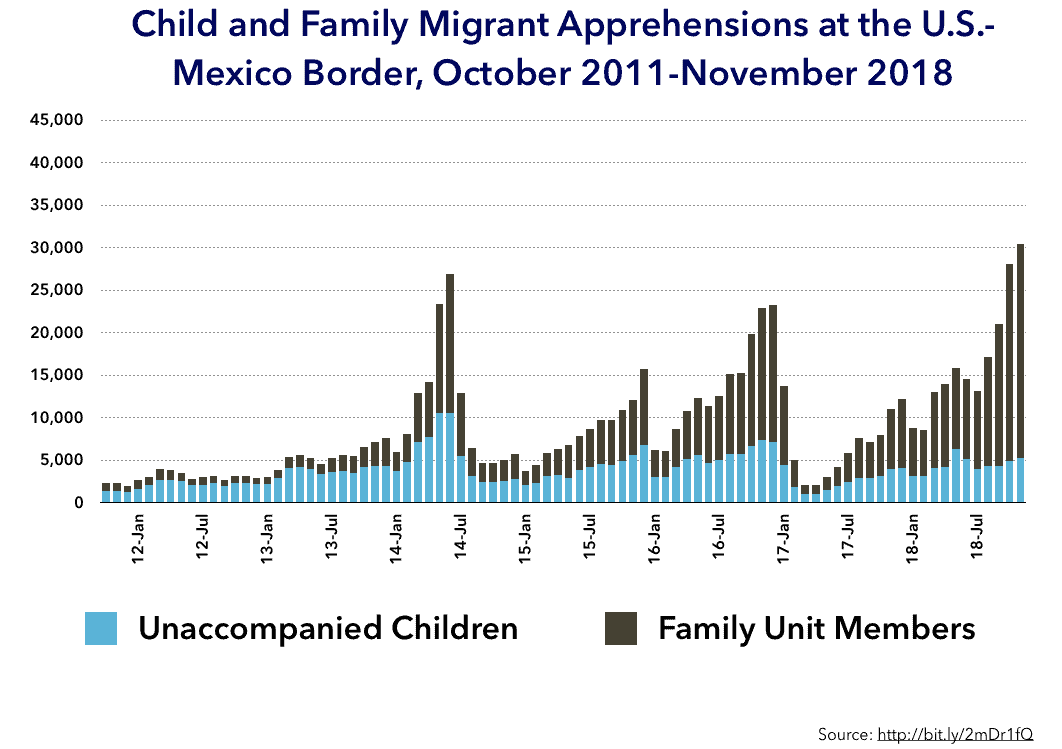(AP Photo/Oliver de Ros)
(AP Photo/Oliver de Ros)
When he appears on national television tonight, President Trump may declare a national emergency, empowering him to use Defense Department funds to have soldiers build a border wall. This would allow him to evade a Congress where he is unable to convince a majority to give him the $5.7 billion he wants to build 234 miles of “new physical barrier.”
While this step might allow President Trump to claim he is building a wall, it could do serious harm to the checks and balances on executive power on which our democracy depends. It would also set a terrible modern precedent for the misuse of the U.S. military on U.S. soil for domestic, politicized means.
As U.S. law is written, there is little Congress can do to stop this. To reject a national emergency declaration, Congress must pass a joint resolution rejecting it. A joint resolution requires the president’s signature. If the Republican-majority Senate somehow went along and Congress passed such a resolution, Trump could veto it. The Senate (and perhaps the House) would be unable to muster the two-thirds majority necessary to override such a veto.
So the battle will be in the courts. It will be up to judges—probably going all the way to the Supreme Court—to decide whether an “emergency” exists at the U.S.-Mexico border.
WOLA staff have worked at the U.S.-Mexico border since 2011. We’ve been there dozens of times, and are visiting again this week. And we want to be as emphatic as possible: there is no security emergency at the U.S.-Mexico border. What we do have at the border is a growing humanitarian crisis, as tens of thousands of Central American children and families come to the border each month seeking asylum.
The United States needs to take urgent measures to address this humanitarian crisis. But building a wall is not one of those measures. Building a wall to deal with asylum-seeking families is like building a horse-and-buggy trail to deal with highway traffic. A wall does nothing to impact the conditions driving people to migrate, and does nothing to affect the flow of asylum-seekers presenting themselves at official U.S. ports of entry.
Ignoring the will of Congress, ruling by decree, and using the military for domestic purposes are behaviors that we, as Latin America specialists, have seen autocratic leaders do often across the region. In order to take such an authoritarian step, Donald Trump will need to prove in court that a national security emergency exists at the border that justifies wall-building.
No such emergency exists. Let’s look at five dimensions of border security: terrorism, gangs, “spillover” violence, drugs, and migration. For all five, the situation is either calm, better than it has been in decades, or problematic in a way that can’t be addressed by a wall.
In a document sent to Congress on January 4, the White House claimed “3,755 known or suspected terrorists prevented from traveling to or entering the U.S. by DHS” in fiscal year 2017. In a January 7 statement, the Homeland Security Department had to acknowledge that “most of these individuals are trying to enter the U.S. by air.” In fact, the State Department’s July 2017 annual report on terrorism read, “At year’s end there was no credible evidence indicating that international terrorist groups have established bases in Mexico, worked with Mexican drug cartels, or sent operatives via Mexico into the United States.” And data obtained by NBC News found that, between October 2017 and March 2018, Customs and Border Protection stopped only six migrants whose names were on the federal government’s list of known or suspected terrorists.
The January 7 Homeland Security statement went on to point out, “Last year at our Southern Border, DHS encountered more than 3,000 ‘special interest aliens’—individuals with suspicious travel patterns who may pose a national security risk.” These are not proven terrorists. Generally, they are people whose one offense is to come from countries that raise “red flags.” Many if not most were probably fleeing their countries to seek asylum.
We can guess that roughly one-third—probably fewer—of the 3,000 “special interest aliens” encountered at the border in 2017 were apprehended between the official ports of entry, in rural areas where Trump’s proposed wall would be built. The U.S. government does not share its current list of “special interest” countries. In an August 2018 report, though, the Center for Immigration Studies—an immigration-restrictionist think-tank—provides a very expansive array of mostly Middle Eastern countries that might possibly be on this list.
Crossing this with Border Patrol data shows that, of all 303,916 migrants apprehended by the agency at the U.S.-Mexico border in 2017, only 1,010—0.3 percent—came from the countries that CIS would consider to be of “special interest.” (The remaining 2,000 or so, using the Trump administration’s “3,000” figure, presumably must have approached U.S. authorities at official ports of entry.) Of the 1,010, all but 222—0.07 percent—were from two countries, Pakistan and Bangladesh. Again, most were probably asking for asylum here.
2017 Border Patrol apprehensions of migrants from possible “Special Interest Countries”: Bangladesh (564), Pakistan (224), Somalia (48), Sri Lanka (48), Turkey (35), Afghanistan (14), Saudi Arabia (14), Uzbekistan (9), Iran (7), Philippines (7), Egypt (6), Eritrea (6), Syria (6), Indonesia (5), Kazakhstan (5), Kuwait (3), Kenya (2), Algeria (1), Ethiopia (1), Iraq (1), Lebanon (1), Malaysia (1), Sudan (1), Yemen (1).
“I am sure all Americans would agree that one terrorist reaching our borders is one too many,” Homeland Security Secretary Kirstjen Nielsen wrote on Twitter on January 7. Nobody disputes that this is a potential threat that requires our constant vigilance. But the low number of suspects, and the even smaller number apprehended in areas where President Trump’s proposed wall would be built, don’t point to an emergency. The terrorist threat doesn’t exceed existing U.S. government capacities to an extent that checks the “emergency” box.
The January 4 White House document claimed “6,000 gang members, including MS-13, apprehended at the Southern Border and removed by ICE.” It includes no time period for this statistic, which raises a lot of questions.
We do know, however, that Border Patrol Chief Carla Provost testified before a Senate committee in June 2017: “Unofficial USBP data reports that between FY 2012 and 06/16/2017, approximately 4,939 aliens have been apprehended with suspected or confirmed gang affiliations, including 1,972 suspected of being affiliated with MS-13.”
In other words, over a period of 5 1/2 years, the agency apprehended approximately 900 people per year with suspected or confirmed gang ties, including just over 350 people per year with possible links to the MS-13. These figures include “suspected,” not actual, gang members. It has been widely documented that ICE uses loose criteria to accuse individuals of gang membership, like tattoos, baseball caps, even a teenager drawing El Salvador’s area code in a notebook.
There are probably some active gang members in those apprehension figures. Many may be former gang members. Many are probably people trying to escape gangs. And many are wrongly suspected. The administration has not proved a systematic pattern of gangs like MS-13 trying to export members by crossing the border illegally, in areas where walls don’t exist.
Let’s recall, meanwhile, that as vicious as MS-13 is, it represents only one out of every 140 gang members in the United States (10,000, according to the Justice Department, out of 1.4 million, according to the FBI.)
This is a constant challenge for U.S. border and law enforcement. But its current dimensions aren’t great enough to meet the “emergency” threshold.
Mexico’s organized crime problem has led to serious public security crises in cities along the U.S. border. However, the security problem does not manifest on the US side of the border. Border towns in Texas, New Mexico, Arizona, and California remain among the safest in the United States.
Twenty-one cities within 100 miles of the border with over 100,000 population reported data to the 2017 FBI Uniform Crime report. Of those 21, only 5 had violent crime rates above the U.S. national average of 382.9 violent crimes per 100,000 inhabitants. Only two were above the U.S. national murder rate of 5.3 per 100,000 inhabitants.
Five of twenty-one border-zone cities above the national violent crime rate: Tucson, Arizona (801.8); Santa Ana, California (488.5); El Cajon, California (410.7); Oceanside, California (392.5); Moreno Valley, California (384.7).
Two of twenty-one border-zone cities above the national murder and non-negligent homicide rate: Tucson, Arizona (8.6); Santa Ana, California (6.3).
“Spillover” violence doesn’t happen nearly enough to justify an emergency declaration.
Seizure data indicates a notable increase in cross-border trafficking of heroin, fentanyl, methamphetamine, and cocaine in recent years. Border-zone seizures of marijuana, on the other hand, have collapsed by 70 percent since 2013—probably a consequence of legalization in the United States.
But that diminishing amount marijuana—which is heavier and bulkier—is the only one of those drugs that is predominantly trafficked in areas of the border that lack a wall. All of the others, the drugs that are becoming more prevalent, are almost entirely trafficked at the land ports of entry (POEs), the 47 official border crossings. The DEA’s 2018 National Drug Threat Assessment explains: “The most common method employed by these TCOs [transnational criminal organizations] involves transporting illicit drugs through U.S. POEs in passenger vehicles with concealed compartments or commingled with legitimate goods on tractor trailers.”
Here is how much of each drug has been seized at ports of entry, and between POEs by Border Patrol, since 2012. Except for marijuana, the overwhelming majority of drugs are found at the POES—not the areas between them where the Trump administration wants to build more wall. (Note, too, that much of the Border Patrol portion was seized at the agency’s inland checkpoints, from vehicles that had passed through the ports of entry several miles earlier.)





(These charts were made using CBP data presented at this web page.)
Building a wall could complicate some marijuana smuggling. But the drugs whose trafficking could arguably constitute an “emergency” are passing through the ports of entry, not the areas where walls might be built.
The number of undocumented migrants apprehended by Border Patrol at the U.S.-Mexico border in 2018—396,579 people—was the fifth lowest total since 1973. The number of adult migrants traveling without families (239,331) was almost certainly the second-lowest total since 1970.

(This chart was made using Border Patrol’s 1960-2017 apprehension data, its 2000-2017 Mexico versus “Other than Mexico” apprehension data, and its 2018 apprehension figure.)
The following chart shows monthly apprehensions of single adult migrants since October 2011.

The trendline is actually down since 2013-14, which was already a decades-low level. This doesn’t constitute an emergency—to the contrary, it’s the calmest situation in decades.
But let’s look at that same monthly timeframe and scale, since October 2011, showing child and family migrant apprehensions.

It has come in waves, but the current wave is the largest ever for family-unit members. In October and November 2018, about 60 percent of all migrants apprehended at the border were children and family members. This has never happened before. The vast majority came from the three Central American “northern triangle” countries.
Most of these children and families are seeking out U.S. border authorities, not trying to evade them. They are requesting protection in the United States, claiming a fear of returning. They are entering an asylum system that is now so overburdened that they are routinely assigned hearing dates in 2022 or 2023.
This is a humanitarian crisis. It may go on for a while. The profile of migration has changed. It is a “new normal.” And walls won’t stop it.
If we were serious about dealing with this crisis, we wouldn’t be wasting our time debating bombastic wall-building proposals. (We’d discuss barriers by having Border Patrol sector chiefs point out remaining areas where a few miles of fence would make their jobs easier, and then we’d calmly discuss that.)
Instead, we should be discussing what is needed to deal with the humanitarian crisis and other remaining challenges at the border. With no national-security emergency—a view that we hope U.S. judges will share, for the sake of our democracy—we should devote resources to these five urgent areas: